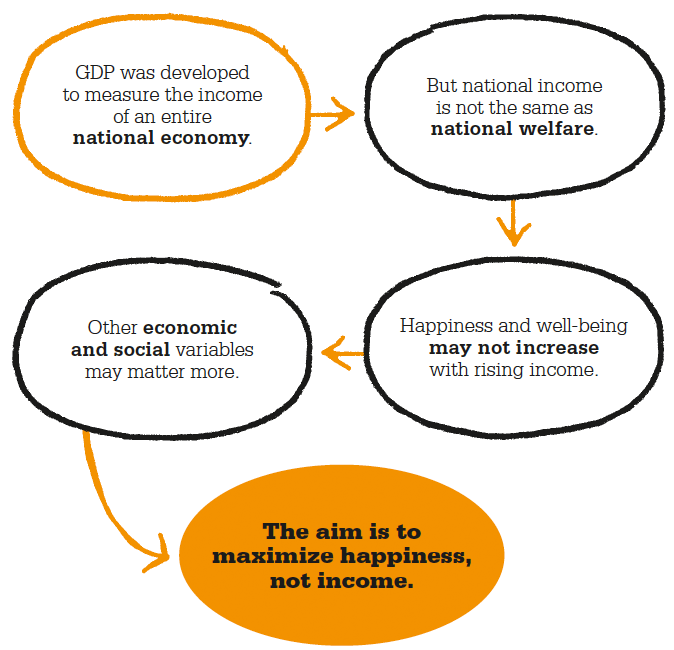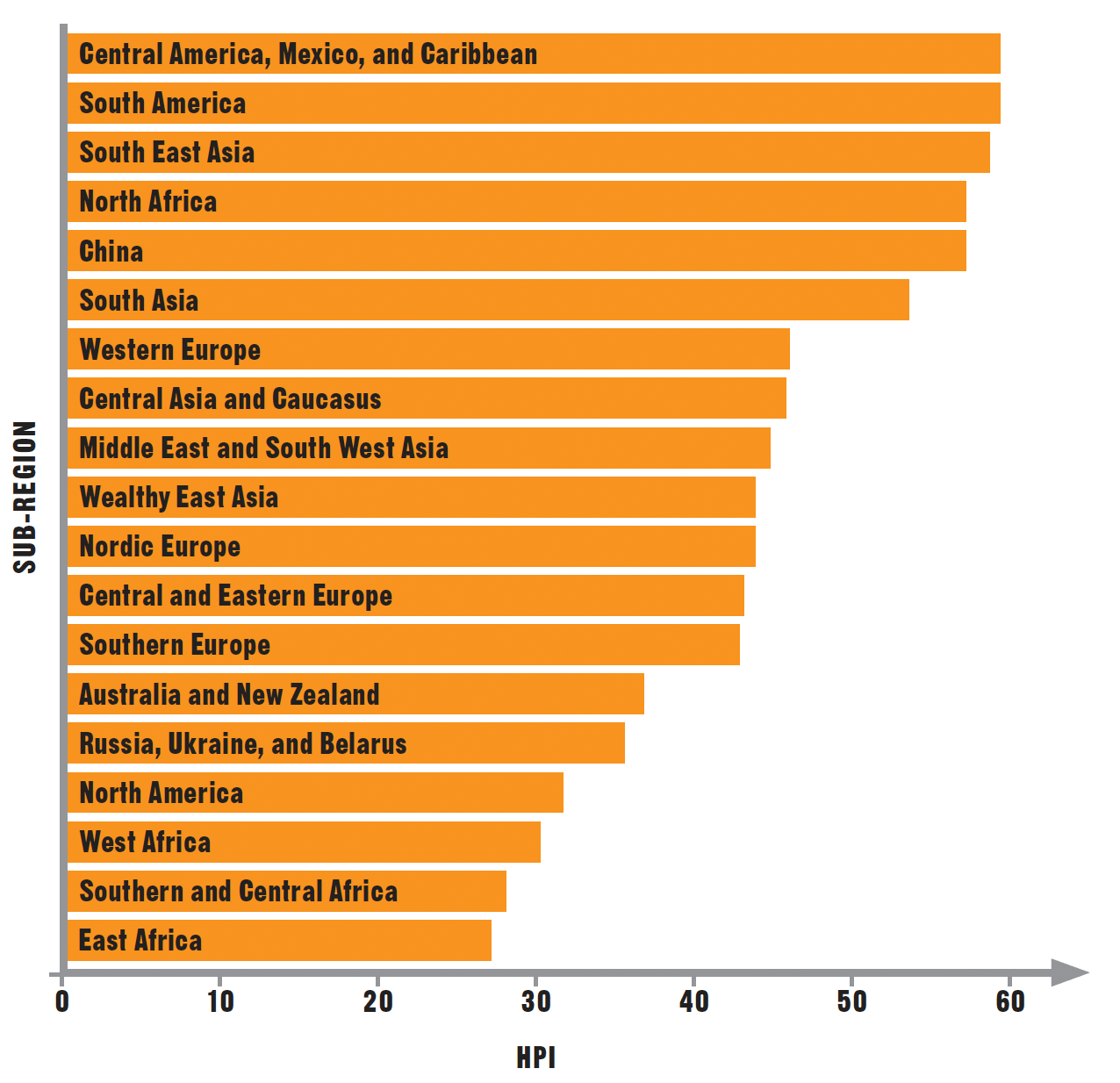

Society and the economy
Richard Easterlin (1926–)
1861 John Stuart Mill argues that a moral act is one that maximizes overall happiness.
1932 Simon Kuznets publishes the first national income accounts for the US based purely on conventional economic variables.
1997 British economist Andrew Oswald argues that joblessness is the main reason for unhappiness.
2005 British economist Richard Layard publishes Happiness: Lessons from a New Science, revisiting the debate about the link between happiness and income.
The first modern national accounts for a country were created for the US in the 1930s by Russian-American economist Simon Kuznets. His pioneering work later led to the creation of national accounts in the UK, Germany, and other developed countries. These accounts involved summing up all the transactions made in an economy over a year to arrive at a figure for its national income, which became known as a country’s gross domestic product (GDP). Early economists, such as the Frenchman François Quesnay, had attempted to derive similar measures, but their efforts had foundered due to the apparent size of the task. It became possible only through developments in statistics, survey techniques, and studies of the whole economy.

From their first appearance, GDP figures presented an almost irresistible lure for politicians, journalists, and economists. In a simple form they appear to present a figure that sums up all the most important facts about an economy. Rising GDP means more jobs and higher wages, while falling GDP means unemployment and uncertainty. After World War II debates over economic policy very rapidly turned into little more than a series of arguments over how best to increase GDP. Different policies were pursued, but they all had the same aim.
However, this overlooked some important questions. GDP is only a number, and perhaps not the most important one. There is no necessary connection between GDP and real social welfare, as Kuznets himself once pointed out in a US Congressional hearing. Rising GDP can be distributed very unevenly, so a few people have a great deal of money while many others have very little. Other factors that make people happy, such as familial or friendly relationships, simply do not register on its scale. Nonetheless, GDP became the paramount statistic in economics and was taken to show that a country was doing well. It was widely believed, if never quite demonstrated, that even where GDP did not perfectly match welfare, both welfare and GDP would move in the same direction.
A direct challenge to the concept of GDP and national income was provided in 1974 by US economist Richard Easterlin. He looked at surveys of people’s reported happiness in 19 countries for the previous three decades and suggested that the link between GDP and welfare was not as robust as people thought. Easterlin found that reported happiness increased with income, much as expected. But for those earning above subsistence levels, the variation in reported happiness across different countries did not vary greatly, despite large differences in national income. People in rich countries were not necessarily the happiest.
Over time, the picture seemed even more peculiar. In the US there were continual, comparatively rapid increases in GDP over the period since 1946, but the levels of happiness reported in surveys did not appear to follow suit—in fact, it declined over the 1960s. Money, it seemed, really did not buy you happiness.
"Economic things matter only in so far as they make people happier."
Andrew Oswald
British economist (1953–)
The results of Easterlin’s surveys became known as the Easterlin paradox. They sparked fresh research into the relationship between economics and well-being that had otherwise been dormant since the late 19th century. Researchers tried to assess the ways in which decisions by individuals, firms, and government can impact how people feel about themselves and society.
One explanation was offered by the concept of the “hedonic treadmill,” first proposed in 1971 by US psychologists Phillip Brickman and Donald Campbell. They suggested that people adapt very rapidly to their current levels of well-being, maintaining this level regardless of events, good or bad. When income rises, they rapidly adapt to the new level of material security, treating it as normal and so being no happier than they were previously. An extreme version of this theory would imply that, beyond subsistence incomes, nearly all economic development is irrelevant for welfare, because people’s happiness is determined by something altogether different, such as character or friendships.

Envy is one cause of unhappiness. Whether or not your neighbors have more than you can be a more important factor to your well-being than how much you have yourself.
Alternatively, researchers have put forward the importance of status and comparisons with others. For example, if no one in a society has a car, not having a car makes little difference. But as soon as some people obtain cars, others without a car might experience this as a loss of status. “Keeping up with the Joneses” means that as economies grow, the new wealth has limited positive impact on reported happiness. Everyone ends up in a rat race, frantically trying to out-consume everyone else. The more unequal the society, the worse this becomes.

The Happy Planet Index (HPI) was introduced by the New Economics Foundation in 2006. It combines three measures to produce an overall score: life expectancy, individual well-being, and the environmental impact of people’s consumption.

A spring festival in Bhutan is celebrated with dancing. In 1972, the king decreed that his government would pursue policies that maximized “Gross National Happiness.”
As interest in the Easterlin paradox grew during the 2000s, the paradox began to be challenged. Using data from a broader set of countries, US economists Betsey Stevenson and Justin Wolfers suggested in 2008 that happiness does increase with income across different countries, and that rising income also leads to greater well-being.
In general, researchers have discovered that while higher incomes do not translate easily into increased levels of happiness, losing incomes has a seriously detrimental effect on well-being. Redundancy and unemployment hit well-being particularly hard, as do serious illness and new disabilities.
In other words there is some relationship between GDP and national income, but it is not a simple one. As better data has become available, the notion of happiness and well-being as a possible target for government policy has gained ground. In turn, this has led to the slow displacement of GDP as the critical economic variable of interest. The argument is simple: if widely-reported economic variables do not capture important aspects of economic and social life, focusing on those variables could lead to bad policymaking. If policies were based on “happiness indicators” rather than GDP alone, new priorities would emerge. These might include measures to encourage a better work–life balance. Unemployment might be considered more costly, and greater measures taken to alleviate it. Broader measures of well-being are already in use, particularly in discussions about developing countries: for instance, the human development index combines income with life expectancy and education. It has been argued that a narrow focus on GDP growth helped to obscure the problems created by the buildup of debt prior to the financial crash of 2008. Had broader indicators been available, more attuned to perceptions of well-being and closer to people’s real interests, the single indicator of rising GDP alone would not have been cause for celebration.

The people of the Bahamas score very highly in the Satisfaction with Life Index, which was devised by British psychologist Adrian White to measure feelings of well-being.
In 2007, French President Nicolas Sarkozy asked economists Joseph Stiglitz, Amartya Sen, and Jean-Paul Fitoussi to investigate the measurement of social and economic progress, and to look at how broader measures of welfare might be introduced. Their report, published in 2009, argued that it is necessary to shift the focus of economic policymaking from measures of economic production (such as GDP), to measures of well-being and sustainability. In particular, their report highlighted the fact that the gap between common economic indicators and reported well-being appears to be widening.
An alternative system of measurement would, of necessity, use a range of different indicators such as health and the environmental impact of lifestyles, rather than attempt to summarize everything through just a single number.